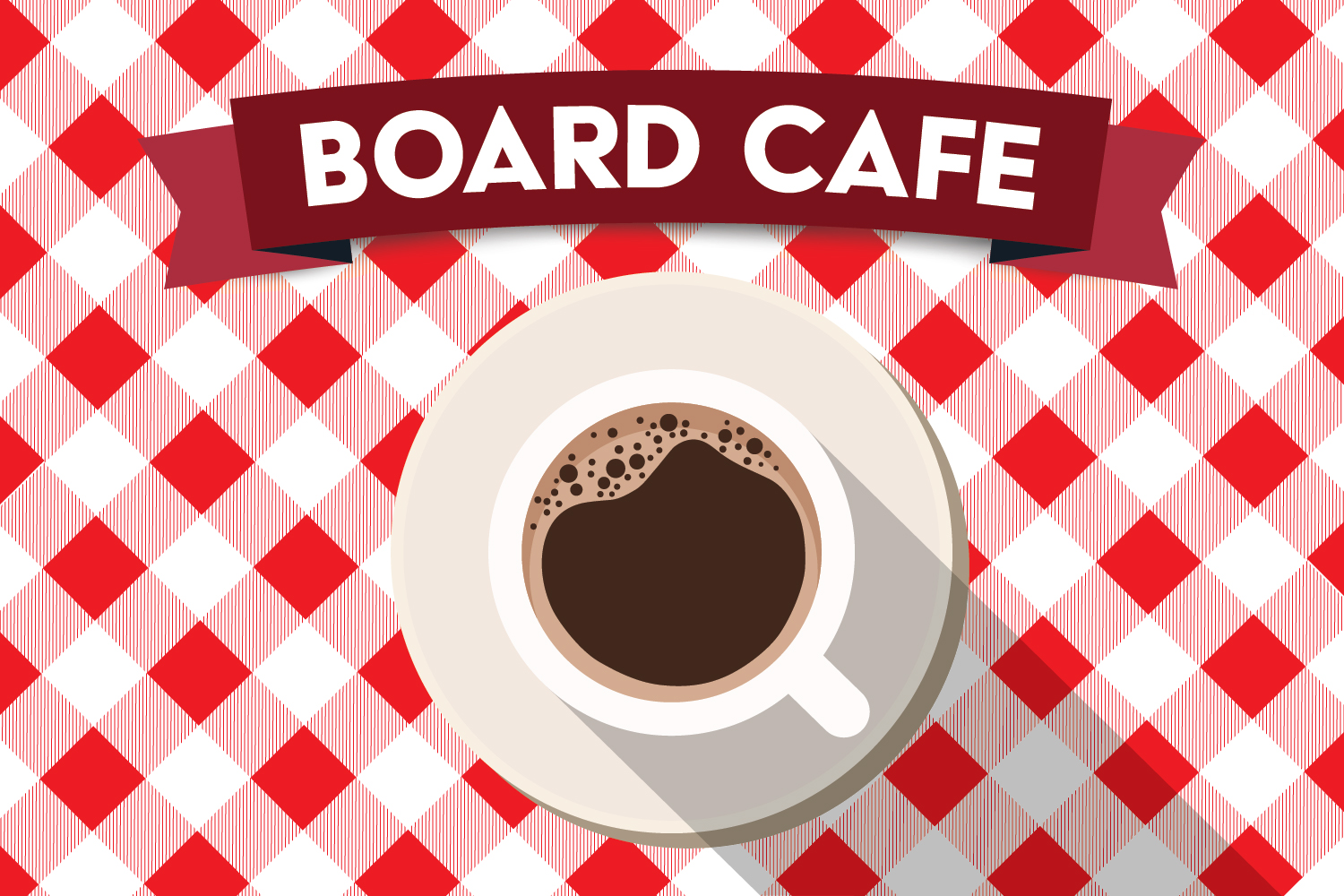Critical Path for the Board
A powerful approach to determining your board’s agenda and work for the year.

What is the board supposed to be discussing, anyway? What is the board supposed to be doing, anyway?
Rather than suggesting a strategic plan or a conventional list of discussion topics, in this issue we offer a powerful approach to determining the board’s agenda — and work — for the year.
Whether on a current or past board, perhaps you have had the experience of seeing months go by without a discussion that feels either genuinely important or interesting. One reason may be that traditional board agendas are heavy on committee and staff reports, such as Finance Committee Report, Fundraising Committee Report, or Executive Director Report. There isn’t much to do except listen.
Many boards and their executive directors complain about a “lack of engagement” and bring in speakers or even undertake strategic planning as ways to “get the board engaged.” But even if there is discussion at meetings, shouldn’t the goal be something more than just lively talking? Instead of “How can we get the board engaged?” perhaps the question should be:”WHAT should the board engage with?”
The term “critical path” originated in the field of project management to mean the sequence of milestones that a project must follow to finish in the shortest amount of time. The term has come broadly to mean the path or sequence of decisions and actions that will lead to success.
One way to get to this Critical Path for the board is to clarify what the critical path is for the organization this year. At least annually, ask this question of the executive director and the board officers: What does the organization NEED to accomplish this year? What are the most important two or three things that have to get done?
The answer might be, “to be named one of the six city lead health centers,” “to move to a new office,” “to get our enrollment up,” “to either fire or see great improvement in the CEO,” “to get our finances under control,” “to explore and maybe merge,” “to find a way to raise salaries,” or “to get the board’s act together in preparation for hiring a new executive director.”
The Big Job for the organization (or two or three jobs) will lead naturally to two other questions. First, what does the board need to do in order to get this Big Job done? And second, what do board members need to know in order to do that?
Let’s look at an example of a Big Job and the board’s critical path, and imagine an organization that matches adult mentors with young people. This organization has two big issues in front of it. First, although they have a waiting list, they don’t have enough mentors, so their matches have declined by 18% over the last year-what is the problem and what can be done about it? Second, they have enjoyed a substantial 3-year grant from the county which will be ending in six months. Should the organization expect to get a renewal? Plan to cut back? Find another source of income?
Old agenda:
- Finance Committee report: last month’s financial statements
- Fundraising Committee: ask members to contribute raffle prizes
- Executive Director’s report: mentor recruiting
New agenda:
- County funding: Form task force to investigate likelihood of renewal; develop strategy for renewal (such as board member meetings with county officials)
- Matches: Report from board-staff task force on the ten interviews they’ve conducted with mentors to learn how they were recruited. Review plan from executive director on staff work to recruit more mentors. Generate and prioritize list of ways that board members can assist with recruiting.
- Finance Committee-Contingency budget if county funding is not renewed.
In short, by beginning with what the organization has to accomplish and then what the board has to accomplish — and what it thereby has to discuss — the board is grounded in pressing and meaningful work. The critical path may have been outlined in a recent strategic plan, or there may be a major “event” such as executive director departure, a substantive funding cut, or other matter.
A discussion of the critical path will lead naturally to which committees and task forces are needed, what kinds of board members need to be recruited, what individual and group tasks there are for the board, and to what key items the board must hold the executive director accountable.
What is the most important issue, challenge or problem facing your organization? And when did the board last discuss this?
See also:
- A Nonprofit Dashboard and Signal Light for Boards
- What’s the Point of a Nonprofit Board, Anyway?
- A Board Leads an Organization Out of the Ashes
This article is excerpted from Best of the Board Cafe, Second Edition, just out in October, 2009, with dozens of articles from the popular Blue Avocado column. Click here to order.
About the Author
Jan is a former editor of Blue Avocado, former executive director of CompassPoint Nonprofit Services, and has sat in on dozens of budget discussions as a board member of several nonprofits. With Jeanne Bell and Steve Zimmerman, she co-authored Nonprofit Sustainability: Making Strategic Decisions for Financial Viability, which looks at nonprofit business models.
Articles on Blue Avocado do not provide legal representation or legal advice and should not be used as a substitute for advice or legal counsel. Blue Avocado provides space for the nonprofit sector to express new ideas. Views represented in Blue Avocado do not necessarily express the opinion of the publication or its publisher.












This concept reinforces the value of the Board/leadership having a clear understanding and commitment to the nonprofit’s intended impact and their role in moving toward it! Through my personal experiences and my consulting work, it’s been rewarding and inspiring to witness the increased level of engagement and the richness of the conversation when agendas move away from committee reports and toward strategic issues. Thank you for capturing this critical issue in such succinct and practical language!
How do you ensure that in determining Big Jobs, you don’t cross the line from governance to operations?
How do you ensure that in determining Big Jobs, you don’t cross the line from governance to operations?
I am the managing director of a small but very ambitious nonprofit theatre company in the Midwest, and I frequently find articles like this to be a huge help for our operations, development and governance. Your suggestions regarding mission growth and board development and governance have helped us to better evaluate what is healthy for our organization and you have helped us streamline our needs and goals. Thank you!
I am a great advocate of ‘critical path’ thinking for boards especially when the group may be overwhelmed with competing priorities. For example, if a critical goal was to achieve accreditation by an external agency establishing a critical path to achieve this would help keep the initiative alive and not simply put on the back burner.
Phil Deely www.strategicgov.blogspot.com
The "Critical Path for the Board" is an excellent article, and right on in many ways. One of the challenges for board members of well run organizations is to avoid being the "rubber stamp"; and to address the big picture of mission direction, relevance, where should we be headed, how do we get there.
The "Critical Path for the Board" is an excellent article, and right on in many ways. One of the challenges for board members of well run organizations is to avoid being the "rubber stamp"; and to address the big picture of mission direction, relevance, where should we be headed, how do we get there.
At first I was glad to see this article. I have coached innumerable board members and CEOs on avoiding the dangers of boring board meetings. No more than five minutes should be spent on reports because they can be delivered in writing. The rest of the meeting must be a team effort, focused on improving the effectiveness of the organization towards its mission. This article started off right on track.
But then I hit this wall: “The answer might be, “to be named one of the six city lead health centers,” “to move to a new office,” “to get our enrollment up,” “to either fire or see great improvement in the CEO,” “to get our finances under control,” “to explore and maybe merge,” “to find a way to raise salaries,” or “to get the board’s act together in preparation for hiring a new executive director.””
At One Street, we have found that these assumed priority tasks for board members are even more dangerous than boring board meetings. When board expectations focus entirely on threatening the CEO (fire or improve) or overriding the staff’s duties (explore merge, raise salaries, get finances under control) without any mention of working as a team with the CEO, factions are created between the board and staff members. Because One Street’s mission is to serve the needs of leaders of organizations we have had to respond to too many emergencies created by this misconception of divided, antagonistic leadership in nonprofits.
While the end of the article did turn back to a healthier example based on mission work, it is unfortunate that authors of such articles and readers within our sector happily accept the picture of boards and CEOs pitted against each other.
You’re closing paragraph made me gasp, as one of the readers who praised the inclusion of the original article.
What you’ve described is an unfortunate reality, though certainly far from acceptable — at least in my opinion and from my experience. In fact, I believe it’s one of the first dynamics that needs to be surfaced and addressed for any sort of strategic transition to occur. Whatever the priority tasks, they should be strategic and worked through with the Board and CEO acting in a constructive partnership (I believe that is the BoardSource phrase among the 12 principles for Exceptional Boards).
My hope was and remains that readers who haven’t yet been introduced to the concept of a critical path and who believe there is a better way to engage Board and staff together for the advancement of the mission … that they will find their own way into the appropriate priorities and will be able to take your caution to heart as they begin implementation.
Regards,
Melanie Schmidt
Thank you Melanie, for recognizing this critical concern and offering some ideas for countering it, even as we remain entrenched in its effects. I also believe that once this concern becomes widely recognized and our sector as a whole finally embraces the need to counter it, creating the expectation of kind and respectful teamwork between staff and board members will come with ease. Hearts know what’s right.
I think that Jan hits the nail on the head when she poses the question "WHAT should the board engage with?" However, I would argue that the WHAT is a vision for the community (notice I didn’t say a vision for the organization) and the board’s role in ensuring that the pre-conditions for achieving that vision are being met. In this respect, a board has two simple foci: linking to the community and ensuring that the staff has the support and resources to build those pre-conditions.
This is the premise advocated by Hildy Gottlieb and others associated with the Community Driven Insititute. Too often, boards can become pre-occupied with the means to an end (standards, tactics for increasing engagement, doing the staff’s work) rather than focusing on the end goal itself. If the focus is on the vision for the community, and the board is conssistently focused on what the board and staff needs to be doing to successfully achieve that goal, the priorities will follow and engagement at the board level and throughout the community will follow.
This approach is a powerful means of making a real difference in our communities, and – oh, by the way, naturally increasing board engagement and focus on governing for what matters in achieving change.
For a wealth of additional information about this approach see the Community Driven Institute’s web site: http://www.help4nonprofits.com/
Bill Musick
Tower Hill Resources
Honolulu, HI
I think that critical path would need to be linked to a strategic plan, albiet a customized, abbreviated one. Is it possible to properly evaluate mission and impact without thinking through and researching what needs to happen beyond the current year (as a board/staff team) before coming up with a critical path? I’m all for board meetings being all about strategic thinking and the future. I also think its possible to design a strategic planning process to be the same way.
Ah, i see. Well that's not too tricky at all!"